I. Introduction
A. Importance of Relaxation
Relaxation: In the whirlwind of modern life, where the pace is relentless and the demands are many, relaxation is not merely a luxury—it is a necessity. The constant barrage of responsibilities and digital stimuli can lead to a state of chronic stress, which, if left unchecked, wreaks havoc on our mental and physical well-being. Acknowledging this fast-paced nature is the first step towards understanding the need for deliberate calmness.
The impact of stress is profound, affecting every system within the body. It can lead to a multitude of health issues, ranging from anxiety and depression to heart disease and diabetes. Stress triggers the body’s fight-or-flight response, releasing hormones that prepare us for emergency action. While beneficial in short bursts, prolonged exposure to these stress hormones can impair cognitive function, compromise the immune system, and increase the risk of chronic diseases.
II. Deep Breathing Exercises
A. Technique 1: Diaphragmatic Breathing
Diaphragmatic breathing, also known as “belly breathing,” is a fundamental relaxation technique that engages the diaphragm, a large muscle at the base of the lungs responsible for efficient respiration. Unlike shallow chest breathing, diaphragmatic breathing encourages full oxygen exchange and can have a calming effect on the nervous system.
1. Explanation of Diaphragmatic Breathing
This technique involves deep breathing that fully engages the diaphragm and abdominal muscles, allowing the lungs to expand more fully and improving the efficiency of each breath.

2. Step-by-step Guide for Practicing Diaphragmatic Breathing
- Lie down: Find a comfortable position lying on your back, with your knees bent or a pillow under your knees.
- Hand placement: Position one hand on your upper chest and the other just beneath your rib cage, enabling you to sense the motion of your diaphragm.
- Inhale: Slowly breathe in through your nose, feeling your stomach press into your hand. The hand resting on your chest should stay as motionless as can be.
- Exhale: Engage your abdominal muscles, letting them fall inward as you exhale through pursed lips. The hand resting on your chest should stay immobile.
B. Technique 2: 4-7-8 Breathing
The 4-7-8 breathing method is a simple yet powerful technique to promote relaxation and can be particularly helpful for reducing anxiety and aiding sleep.
1. Introduction to the 4-7-8 Breathing Method
Developed by Dr. Andrew Weil, the 4-7-8 method is based on pranayama, an ancient yogic breathing practice. It involves a rhythmic pattern of breathing that helps to quiet the mind and relax the body.
2. Instructions on How to Perform 4-7-8 Breathing for Relaxation
- Prepare: Sit or lie comfortably, placing the tip of your tongue against the roof of your mouth, just behind your front teeth.
- Exhale: Begin by completely exhaling through your mouth, making a whoosh sound.
- Inhale: Close your mouth and inhale quietly through your nose to a mental count of four.
- Hold: Hold your breath for a count of 7.
- Exhale: Breathe out entirely through your mouth, creating a whooshing sound, counting to eight.
- Repeat: This is a breath cycle. Complete the sequence three additional times, resulting in a total of four breaths.
By incorporating these breathing exercises into your daily routine, you can create a sanctuary of calm within the chaos of life, fostering a sense of peace and equanimity that benefits both mind and body. Remember, the key to reaping the benefits of any relaxation technique is consistency and practice.
III. Mindfulness Meditation
A. Understanding Mindfulness
Mindfulness is the skill of grounding oneself in the current moment, wholeheartedly participating in the present. It is a cognitive state attained by directing one’s attention to the ongoing encounter while serenely recognizing and embracing one’s emotions, ideas, and physical sensations. This ancient practice, rooted in Buddhist meditation, has found its place in modern therapy as a powerful tool for reducing stress and enhancing overall well-being.
The connection between mindfulness and relaxation is profound. By directing attention to the present, mindfulness cuts through the noise of past regrets and future anxieties, leading to a tranquil state of mind. This shift away from stress-inducing thoughts to a focus on current sensory experiences promotes a state of relaxation that can have lasting effects on both mental and physical health.
B. Technique: Mindful Breathing Meditation
1. Guided Steps for a Simple Mindful Breathing Meditation
- Find a Quiet Space: Begin by finding a comfortable and quiet place where you can sit or lie down without interruptions.
- Adopt a Relaxed Posture: Maintain an upright posture without stiffness in your back. Let your hands rest softly on your lap or knees.
- Focus on Your Breath: Shut your eyes and focus on your breath. Observe the feeling of air flowing in and out of your nostrils.
- Acknowledge Wandering Thoughts: When your mind wanders, gently acknowledge the thoughts and return your focus to your breathing.
- Continue the Practice: Maintain this focus for several minutes, allowing the rhythm of your breath to anchor you in the present moment.
2. Emphasizing the Benefits of Regular Mindfulness Practice
Regular mindfulness practice can lead to significant improvements in mental clarity, emotional stability, and physical health. It has been shown to reduce symptoms of anxiety and depression, improve sleep quality, and even lower blood pressure. The key to these benefits is consistency; even a few minutes each day can lead to profound changes over time.
IV. Progressive Muscle Relaxation (PMR)
A. Introduction to PMR
Progressive Muscle Relaxation (PMR) is a therapeutic technique that involves alternating tension and relaxation in all of the body’s major muscle groups. Developed by Dr. Edmund Jacobson in the early 20th century, PMR is based on the premise that mental calmness is a natural result of physical relaxation.
Recognizing tension in the body and its effects is crucial. Chronic muscle tension can lead to various physical complaints, such as headaches and back pain, and can exacerbate feelings of anxiety and stress. PMR helps individuals become more aware of these tensions and learn how to release them.
B. Step-by-Step PMR Guide
1. Guiding Through the Process of Tensing and Relaxing Different Muscle Groups
- Start at Your Feet: Begin by tensing the muscles in your feet for about five seconds, then relax them completely.
- Work Upward: Gradually work through each muscle group in your body—calves, thighs, buttocks, abdomen, arms, shoulders, and face—tensing each for five seconds and then releasing.
- Breathe Deeply: With each muscle group, breathe in deeply as you tense the muscles and exhale as you release the tension.
2. Stressing the Importance of Practice for Maximum Benefits
Like any skill, the benefits of PMR are most pronounced with regular practice. Over time, you’ll become more attuned to bodily sensations and better able to recognize and release tension as it arises. This can lead to a decrease in overall stress levels and an increase in relaxation and well-being.
Incorporating mindfulness meditation and PMR into your daily routine can serve as powerful tools for managing stress and enhancing relaxation. By dedicating time to these practices, you can foster a greater sense of peace and balance in your life. Remember, the journey to relaxation is a personal one, and these techniques can be adapted to fit your individual needs and preferences. Practice regularly, and you may find a path to deeper serenity and improved health.
V. Visualization Techniques
A. Imagery and Relaxation
The power of visualization lies in its ability to transport us to a place of tranquility without ever leaving our seats. This mental journey can significantly reduce stress levels, improve mood, and enhance overall well-being. By vividly imagining a serene environment, we engage our senses and our minds in a way that can have a profound calming effect.
1. Understanding the Power of Visualization
Visualization, or guided imagery, is a relaxation technique that involves envisioning a peaceful scene or setting. It taps into the subconscious mind, promoting a state of deep relaxation and stress relief.
2. Providing Examples of Calming Visualizations
Examples of calming visualizations include picturing a quiet forest with a gentle breeze rustling through the leaves, a mountain vista with the soft sound of a distant waterfall, or the warmth of the sun as you lie on a sandy beach.
B. Technique: Beach Visualization
1. Step-by-step Guide to Imagining a Peaceful Beach Scene
- Close your eyes and take a deep breath.
- Envision a pristine beach with white sand and crystal-clear waters.
- Hear the gentle waves lapping at the shore.
- Feel the warmth of the sun on your skin and the cool breeze in your hair.
- Smell the salty air and listen to the rhythmic sound of the ocean.
2. Encouraging Creativity in Visualization for Personalized Relaxation
Personalize your visualization by adding elements that bring you joy, such as a favorite beach activity or the presence of a loved one. The more detailed your visualization, the more immersive the experience.
VI. Yoga and Stretching
A. Physical Relaxation through Movement
Yoga and stretching are powerful tools for achieving physical relaxation and enhancing the mind-body connection. These practices help release muscle tension, improve flexibility, and promote a sense of peace.
1. Recognizing the Mind-Body Connection in Yoga
Yoga unites the body and mind through a series of postures and breathing exercises, fostering a deep sense of harmony and inner calm.
2. Benefits of Incorporating Stretching into Relaxation Routines
Stretching as part of a relaxation routine can lead to better posture, reduced muscle tension, and a more relaxed state of mind.
B. Simple Yoga Poses for Relaxation
1. Introducing Beginner-friendly Yoga Poses
Beginner-friendly yoga poses include the Child’s Pose (Balasana), which calms the mind and relieves tension, and the Legs-Up-The-Wall Pose (Viparita Karani), known for its relaxing effects on the nervous system.
2. Emphasizing the Importance of Gentle, Mindful Movement
Gentle, mindful movement in yoga allows for a deeper connection with the body, encouraging a meditative state and fostering relaxation.
Incorporating visualization techniques and yoga into your daily routine can significantly enhance your ability to relax and manage stress. Whether you’re visualizing a peaceful beach or engaging in a gentle yoga stretch, these practices offer a pathway to a more serene and balanced state of mind and body. Remember, the key to effective relaxation is regular practice and personalization to suit your individual needs.
VII. Incorporating Relaxation Techniques into Daily Life
A. Making it a Habit
In the hustle of daily life, finding time to relax can seem like a task in itself. However, integrating relaxation into your schedule is not only possible, it’s essential for maintaining balance and well-being. Here are some tips to help you make relaxation a regular part of your life:
- Schedule Relaxation: Just as you would a meeting, schedule time for relaxation. Whether it’s a brief 10-minute deep breathing exercise or a 20-minute walk, having it on your calendar makes it a priority.
- Utilize Short Breaks: Even on the busiest days, you can find moments to relax. Use these short breaks to practice mindfulness or visualization techniques.
The cumulative benefits of consistent relaxation practice are significant. Over time, regular relaxation can lead to lower stress levels, improved mood, better sleep quality, and a stronger immune system.
VIII. Conclusion
A. Recap of Techniques
Throughout this article, we’ve explored various relaxation techniques, each with its unique benefits. Key techniques include deep breathing exercises, mindfulness meditation, progressive muscle relaxation, visualization, yoga, and stretching.
B. Encouraging Exploration
I encourage you to explore these techniques and find what resonates with you. Remember, the most effective relaxation method is one that you enjoy and can practice consistently. So, take the time to discover your pathway to peace and make relaxation a non-negotiable part of your daily routine.
Relaxation isn’t just a momentary pause; it’s a vital component of a healthy lifestyle. By incorporating these techniques into your life, you can enhance your mental clarity, physical health, and overall quality of life. Start small, be consistent, and watch as the world of relaxation opens up to you, bringing with it a host of benefits for your mind and body.
FAQ
01. How can I relax my mind and body?
To relax your mind and body, try deep breathing exercises, practice mindfulness meditation, or engage in activities like gentle yoga.
02. How can I calm my mind with my body?
Calm your mind by syncing your breath with your body’s movements, such as through mindful walking, stretching, or progressive muscle relaxation.
03. What are mental relaxation techniques?
Mental relaxation techniques include deep breathing, meditation, visualization, and mindfulness exercises that help alleviate stress and promote a calm state of mind.
04. How can I relax my mind in 5 minutes?
Take a break and practice deep breathing, focus on your senses, or try a quick meditation to relax your mind in just 5 minutes.
05. How can I relax in 60 seconds?
In 60 seconds, try a brief deep-breathing exercise, close your eyes and visualize a peaceful scene, or simply focus on your breath to quickly relax.
06. How do you rest your brain?
Give your brain a break by taking short walks, practicing mindfulness, or engaging in activities you enjoy to promote mental rest.
07. How can I clear my mind in 2 minutes?
Clear your mind in 2 minutes by taking deep breaths, closing your eyes, and focusing on the sensations around you, grounding yourself in the present moment.
08. How can I relax in 10 seconds?
Instantly relax by taking a deep breath, exhaling slowly, and releasing tension in your shoulders and jaw for 10 seconds.
09. How can I relax in 2 minutes?
Set aside 2 minutes for a quick relaxation break, practicing deep breathing, or closing your eyes to reset and refresh your mind.
10. What to drink to calm nerves?
Drink calming herbal teas like chamomile or warm milk with honey to soothe nerves and promote relaxation.
Important Notice:
The information provided on “health life ai” is intended for informational purposes only. While we have made efforts to ensure the accuracy and authenticity of the information presented, we cannot guarantee its absolute correctness or completeness. Before applying any of the strategies or tips, please consult a professional medical adviser.















